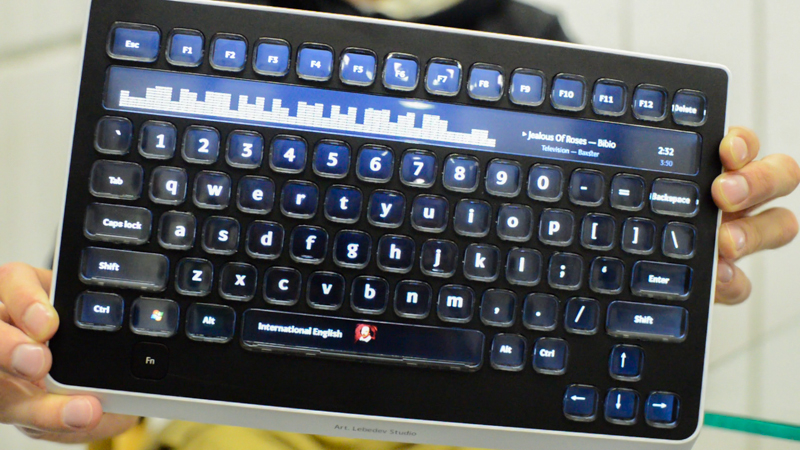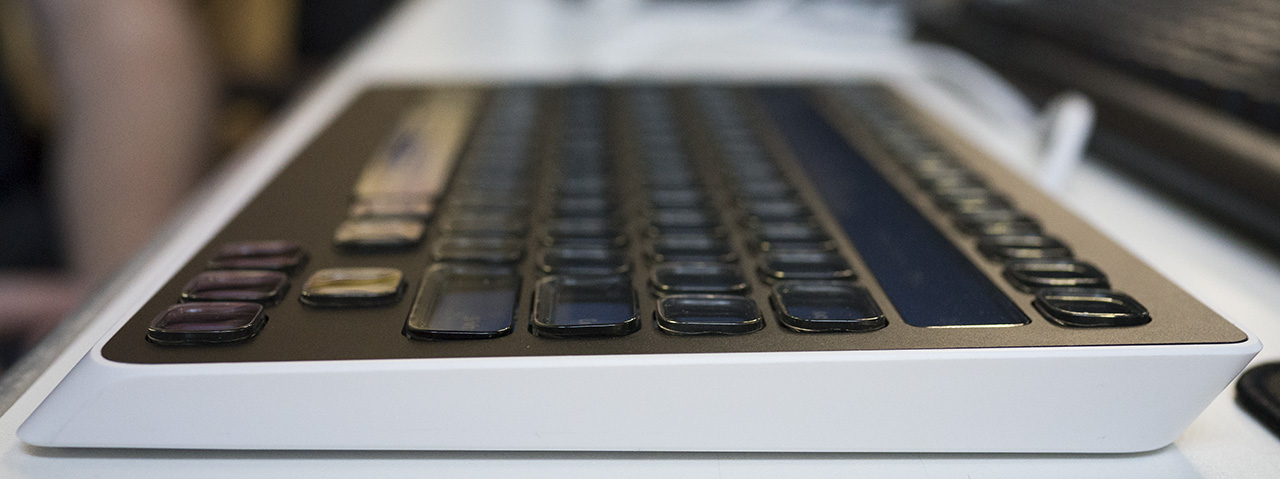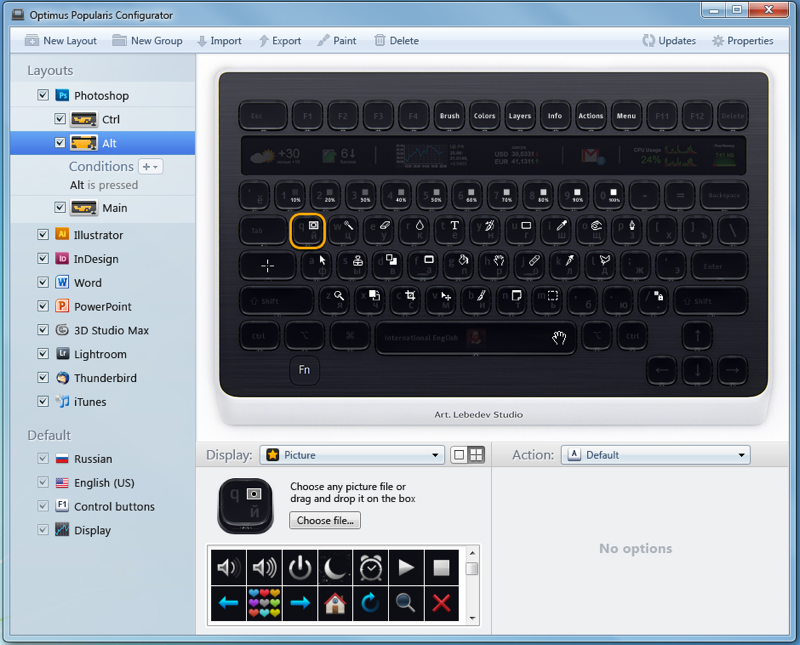Keyboard review Optimus Popularis (+ video)

I saw a couple of weeks ago in the news about the Optimus Popularis keyboard release. He took and wrote to Lebedev, they say, let me see. And in response, suddenly - "come." Well, zaykovsky and I came, listened, took a photo and recorded a small but clear video. All the details under the cut.
Several years ago, Lebedev and Co. made Optimus Maximus, in which a small screen was built into each key. Wildly expensive, not very ergonomic and, as it turned out, short-lived - the pixels of OLED screens faded even despite the screensavers built into Maximus (7,000 hours gives a 50% decrease in brightness of a single color). In general, it would be better if he then remained a concept.

The popularis is made differently. The first layer is the screen. A regular TFT screen with a diagonal of about 11 inches and a resolution of 1366x768 pixels. From above it is covered with a sheet of metal with holes for the keys. And in these holes transparent buttons are inserted through which the screen is visible.


In the system "Popular" is defined in two ways. At first it is visible as a regular keyboard, and a standard layout is displayed on its screen - so that you can enter the BIOS, for example. When the OS boots, the keyboard appears as USB Mass Storage, and the driver starts throwing images onto this “flash drive”. The maximum speed is 21 frames per second. For power, 0.8 A. is needed. Recently, computers have begun to give enough current to the ports, but if anything, the keyboard can be powered from an outlet.
There is a program for setting. Studio staff simply call her “Configurator”. Well so be it. Previously, by the way, the layouts were stored on the SD-card, which was inserted into the keyboard, but now they have refused it and suggest simply exporting them from the “Configurator” and sending them by any means.

The "Popular" has an unshapable feature: in fact, it is suitable for the role of a gaming keyboard, because on each of its keys you can hang a sequence of 32 codes. True, only five can handle physical keystrokes at the same time - it has an ordinary keyboard matrix, and for some improvements there simply would not be enough space between the buttons.
As a matter of fact, the “Popularis” keyboard, well, not bad. Like the keyboards of old macbooks. Elastically presses and accelerates at the end. It rattles not much, not like the Maximus. Transparent keys protrude from the case and slightly distort the picture when viewed from an angle. But this can be used: when creating a layout, not only 72x72 points of the key itself are available, but also another 8 pixels in each direction, which become visible when looking “askew”.

The “Popular” is cheaper than the progenitor, but also not at all divine - 42 thousand rubles. I wouldn’t take it, sorry. But the Americans, they say, take it. They are generally the main market for Lebedev. And for us - to take a look.
